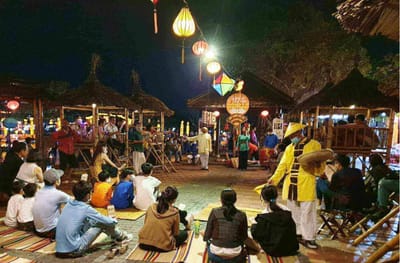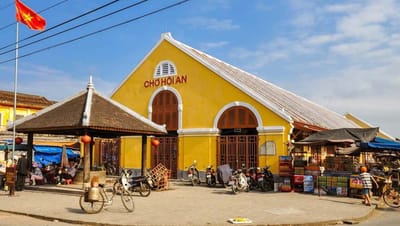First-Time Visitor Essentials: What to Know Before You Go to Hoi An

Executive Summary
Visitor Essentials At-A-Glance: Navigate Hoi An Ancient Town with confidence by understanding the heritage ticket system, optimal visit seasons, transportation options, accommodation recommendations, local customs, and packing checklist. Ideal for travelers seeking a seamless first-time experience in this UNESCO World Heritage Site, these tips ensure you focus on Hoi An’s historic architecture and cultural charm rather than logistical hurdles.
Hoi An Ancient Town welcomes first-time visitors with its well-preserved wooden architecture, lantern-lit streets, and UNESCO heritage status. However, several practical considerations can transform confusion into clarity:
- Secure the 5-coupon heritage ticket (120,000 VND) for entry to key sites
- Time your visit for February–April or September–November to avoid crowds and flooding
- Choose central accommodation on or near Tran Phu Street for walkable access
- Respect local customs: modest dress, quiet temple visits, and mindful photography
- Pack essentials: cash in small denominations, comfortable walking shoes, sun protection, and an offline map
These foundational details let you concentrate on Hoi An’s unique cultural landscape—from Top 15 Attractions to the Japanese Covered Bridge—without planning stress.
1. Heritage Ticket System Overview
Understanding the 5-Coupon Pass
The Hoi An Old Town ticket operates on a coupon-based model granting entry to five heritage sites (ancient houses, assembly halls, or museums) among 22 official locations.
textKEY POINT: You only need the ticket to enter heritage buildings—not to wander the streets, dine, photograph, or cross the Japanese Covered Bridge before 9 AM.
- Price: 120,000 VND per person (~$5 USD)
- Validity: Officially one day; popularly used over 2–3 days
- Purchasing: Yellow booths at Hoang Dieu & Tran Phu, An Hoi Bridge, and six other perimeter points
[Link to: Hoi An Old Town Ticket: Complete Entry Guide to the 5-Coupon Heritage Pass]
Strategic Coupon Use
Prioritize five sites aligned with your interests:
- Historical Overview: Tan Ky Ancient House & Fujian Assembly Hall
- Architectural Study: Cantonese Assembly Hall & Quan Thang House
- Cultural Context: Museum of Trade Ceramics or Museum of Folk Culture
Detailed guidance on site selection appears in our Ticket System Explained article.
2. Best Seasons & Crowd Avoidance
Optimal Visit Months
Hoi An’s climate and tourism patterns advise visiting during:
- Dry Season: February – April (moderate temperatures, minimal rain)
- Shoulder Season: September – November (fewer tourists, manageable flooding)
Avoid:
- May – August: High heat and typhoon risk
- December – January: Peak holiday crowds, higher prices.
textTIP: February’s Lantern Festival (14th lunar day) adds cultural vibrancy but draws large crowds. For balanced experience, schedule reference visits in March or November when weather and visitor numbers align optimally.
3. Accommodation Recommendations
Location & Style
Prioritize proximity to the heritage core (Tran Phu Street) for easy walking access to main sites and evening activities.
- Luxury: Riverside boutique hotels on Bach Dang Street (Anantara Hoi An)
- Mid-Range: Traditional shophouse guesthouses on Hoang Dieu Street
- Budget: Hostels and homestays near Le Loi and Nguyen Thai Hoc
Amenities to consider: air conditioning, in-house restaurant, bike rental, and proximity to ticket booths.
4. Transportation & Getting Around
Arrival Options
- From Da Nang Airport: 30 km taxi (~400,000 VND) or shuttle bus (100,000 VND)
- Rail & Bus: Express buses and trains connect Da Nang city center to Hoi An bus station
In-Town Mobility
- Walking: Ancient Town is pedestrian-friendly; main sites within 2 km
- Bicycle: Available at accommodations (40,000 VND/day)
- Motorbike: 150,000–200,000 VND/day; navigate narrow lanes carefully
[Link to: Hoi An Old Town Walking Routes: Self-Guided Tour Maps & Step-by-Step Directions]
5. Cultural Etiquette
Dress Code & Behavior
- Temples & Assembly Halls: Cover shoulders and knees; remove shoes where indicated
- Photography: Ask permission before photographing residents or religious ceremonies
- Language: Basic Vietnamese phrases (“xin chào” for hello, “cảm ơn” for thank you) appreciated but not mandatory
6. Packing Checklist
- Cash: Small denominations (10k, 20k, 50k VND) for tickets, street food, and bargaining
- Footwear: Comfortable closed-toe walking shoes for cobblestone streets
- Sun Protection: Hat, sunscreen, and sunglasses for daytime tours
- Rain Gear: Compact umbrella or light rain jacket (especially Sep–Jan)
- Tech: Portable battery pack, offline map app (Maps.me)
7. Health & Safety Tips
- Water: Drink bottled water; avoid ice from unknown sources
- Sun & Heat: Take midday breaks in shaded cafes
- Insects: Apply repellent during riverfront and rural excursions
- Emergency: International hospital in Da Nang (reachable by taxi)
8. Quick-Start Itinerary
| Time | Activity |
|---|---|
| Day 1 Morning | Purchase ticket; Visit Fujian Assembly Hall |
| Day 1 Afternoon | Wander walking tours; Coffee break |
| Day 1 Evening | Lantern Festival Experience (Áo Dài views) |
| Day 2 Morning | Tan Ky Ancient House; Museum of Trade Ceramics |
| Day 2 Afternoon | Craft Village excursion; Tailoring visit |
Conclusion
Armed with these First-Time Visitor Essentials, you’ll navigate Hoi An Ancient Town efficiently and respectfully. Secure your heritage ticket, choose optimal timing, book central lodging, and respect local customs. This planning frees you to immerse in the UNESCO heritage charm—from walking routes and architectural marvels to lantern-lit evenings—creating an unforgettable first-time experience.
[Link to: Top 15 Must-See Attractions in Hoi An Old Town]
[Link to: Complete UNESCO Heritage Guide]
No spam, no sharing to third party. Only you and me.






